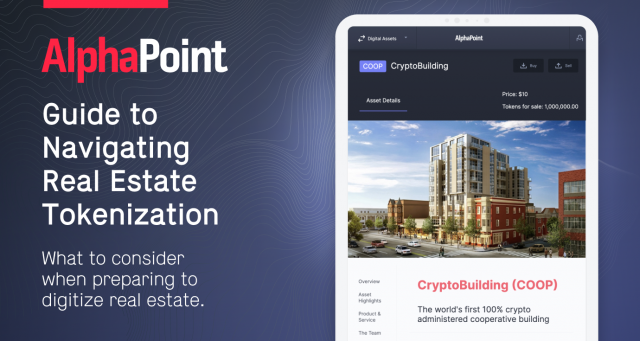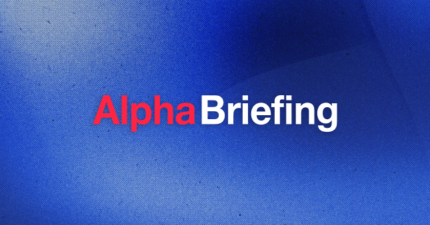Navigating the 3 Phases of Real Estate Tokenization

We will break down the critical steps required to create a digital asset for a physical property such as real estate, and guide you in better assessing the fit of your project with our technology stack.
First, a quick look at how tokenization offers issuers and investors several significant advantages over existing investment options.
Benefits of Tokenizing Real Estate
Digitization of real estate assets on a blockchain-based system addresses several challenges in capital formation and liquidity. Benefits include:
- Access additional capital – Real estate owners and developers can offer smaller investment denominations by fractionalizing a property through a blockchain-based system, expanding distribution to a broader and more diverse investor group.
- Lower illiquidity discounts & liquidity premiums– For highly illiquid assets such as real estate, institutional investors have often had an advantage over individuals due to the steep illiquidity discount associated with majority of commercial real estate investments. Conversely, more liquid investment vehicles, such as publicly-traded REITs, frequently trade at up to a 20% premium.
Tokenization of real estate will enable a broad variety of assets to trade on a secondary market, thereby reducing the spread between illiquid real estate investments and publicly traded investment vehicles and bringing an asset’s executable price closer to its true value.
- Enhanced price discovery – A digital secondary market for individual real estate properties enables real-time pricing information based on order books. Today, this type of information operates in paper-based systems with asymmetrical information by all parties.
- Improved transparency – the use of a blockchain-based system enables the programming of rights, restrictions, and data associated with the underlying property into the tokenized digital asset. For example, AlphaPoint’s APIs can connect with “off-chain” data and valuation systems to increase transparency for investors into the underlying property value.
- Automated Processing – Digital, real-time cap table management with automatic distributions and governance reduces administrative costs while increasing settlement speed.
By wrapping a traditional asset inside a tradable piece of code (a token), digitized securities offer a way to broaden access to investments and lower barriers to entry such as illiquidity, high transaction minimums, and steep administrative costs.
Digitized securities also enable additional investment configurations; for example, an issuer can create design return tailored to specific objectives while offering greater transparency concerning ownership and movement.
How to Digitize Real Estate
Digitization includes three key phases:
- Deal structuring
- Technology selections
- Token creation and distribution
I. Deal Structuring
The deal structure depends on a variety of elements, including jurisdiction, asset type, shareholder types, and the applicable regulation. Often, issuers will opt to tokenize an existing deal to enable liquidity for current investors before raising funds for new offers.
In this phase, asset owners must decide:
1. Asset – Determine the specific property or properties to digitize
2. Legal structure – digitization of real estate requires a legal wrapper around the individual property(ies) to securitize and create an investment vehicle. The most common structures we have seen to-date are:
- Single asset Special Purpose Vehicle (SPV) – title and deed of the physical property are assigned to an SPV structure. Tokens represent shares of the SPV. This type of structure is typically limited to accredited investors or qualified institutional buyers.
- Real estate fund – a private equity fund that invests in a portfolio of properties. Tokens represent ownership shares or units in the fund. Tokenized fund interest is typically available only to accredited investors or qualified institutional buyers.
- Project finance – tokenization can be used as a new mechanism for raising funds for a project. Depending on deal size, tokens may be made available to retail investors as well as accredited investors.
- Real Estate Investment Trust (REIT) – a REIT operator can create digitized shares in a REIT to take advantage of the technology benefits. Tokenholders have the same rights to operating income from the REIT that traditional investors have today. REITs are costly to operate, however, they are advantageous in that they are available for retail investors.
3. Shareholder rights – based on the legal structure, determine if investors have the right to dividends or governance of the entity and/or property. You may also choose to offer multiple tokens that represent different investment classes. For example, you can create a token that represents preferred equity in a property with a liquidation preference, and another token that represents common equity.
4. Investor types – the legal structure may dictate to which types of investors the deal will be made available. The jurisdiction in which the target investor group will reside must also be considered.
5. Execution regulation – the applicable execution regulation may be based on the location of the property or the SPV, the size of the capital raise, and the type and location of investors. It’s important to note that execution regulation may also determine tax treatment of the tokens as well as solicitation restrictions.
II. Technology Selection
Once the legal structure for the property is set up and the deal structure is underway, you must make a few technology decisions. This part of the process is relatively straightforward and fast compared to other phases. We will go into these selections in depth in a follow-up blog post, but at a high-level, the four critical decisions you will need to make are:
- Blockchain / Token Definition – choose the blockchain on which to create the token, and decide which data and transfer restrictions to include in the token.
- Custody – determine a physical custody solution that can suitably store real estate tokens. Investors may also need a custody solution.
- KYC / AML Vendor – determine a KYC / AML vendor that can integrate with the primary issuance platform and the digitized security infrastructure.
- Primary / Secondary Marketplace – where do you want these digitized securities to be offered to investors for the primary issuance? And on which exchanges do you want them to trade? These decisions will ultimately determine the success of the capital raise and the ability for investors to access liquidity. An alternative option is to create your own marketplace, which many of our larger clients are opting to do utilizing AlphaPoint’s Exchange technology.
III. Token Creation & Distribution
Once the technology decision is underway, and the deal has been structured, the next step is to launch the token and distribute it to investors. A few notes on this process:
- Acceptable Funds – Now that you are offering real estate as a digital token for investment, you have the option to accept different types of payment methods easily. You can stick to traditional fiat currencies, or you can enable investors to purchase the digitized real estate using cryptocurrencies or stablecoins.
- Token Creation – the process of launching the token is handled in a web application set up by your technology vendor, such as AlphaPoint. Through the click of the button, you will launch the digital asset and then create a supply of tokens, a process called “minting.”
- KYC / AML – Depending on your selection for the primary issuance platform, your prospective or committed investors will go through an investor onboarding and KYC / AML process. During this time they may also need to link up their digital wallet.
- Token Distribution – Depending on whether you collected funds in advance or sell the tokens in a live sale, you will either send tokens directly to investor accounts or list the digitized real estate on a primary issuance platform. Once investors make the purchase, they will receive the digitized securities, and in real time you can manage the raise and view the cap table.
Our clients believe that the real estate industry will significantly benefit from the shift towards digitization. Tokenizing real estate will increase the value of investments by reducing the illiquidity discount and streamlining transactions. Moreover, by offering supplementary investment opportunities through tokenization, investors can have more flexibility and better returns on their portfolio. At AlphaPoint we’re excited to be a part of this shift and look forward contributing to new market standards.
When Requesting a Demo of AlphaPoint Asset Digitization Software:
A) Indicate that you are interested in licensing technology and building a marketplace for the asset you will be offering to the market
B) Indicate that you are interested in simply getting your asset tokenized and listed in a marketplace
The information (the “Information”) contained herein is being provided to you solely for informational purposes, and may not be used or relied on for any purpose (including, without limitation, as investment, business, legal, tax or trading advice). This Information is subject to change without notice at any time. There is no guarantee that any Information is true, correct or precise. The Information is provided “as is” without warranty of any kind. Under no circumstances and under no legal theory shall AlphaPoint, its suppliers, or any other party involved in creating, producing, or delivering Information be liable to you or any other person for any indirect, direct, special, incidental, or consequential damages arising from your access to, or use of, this Information.


